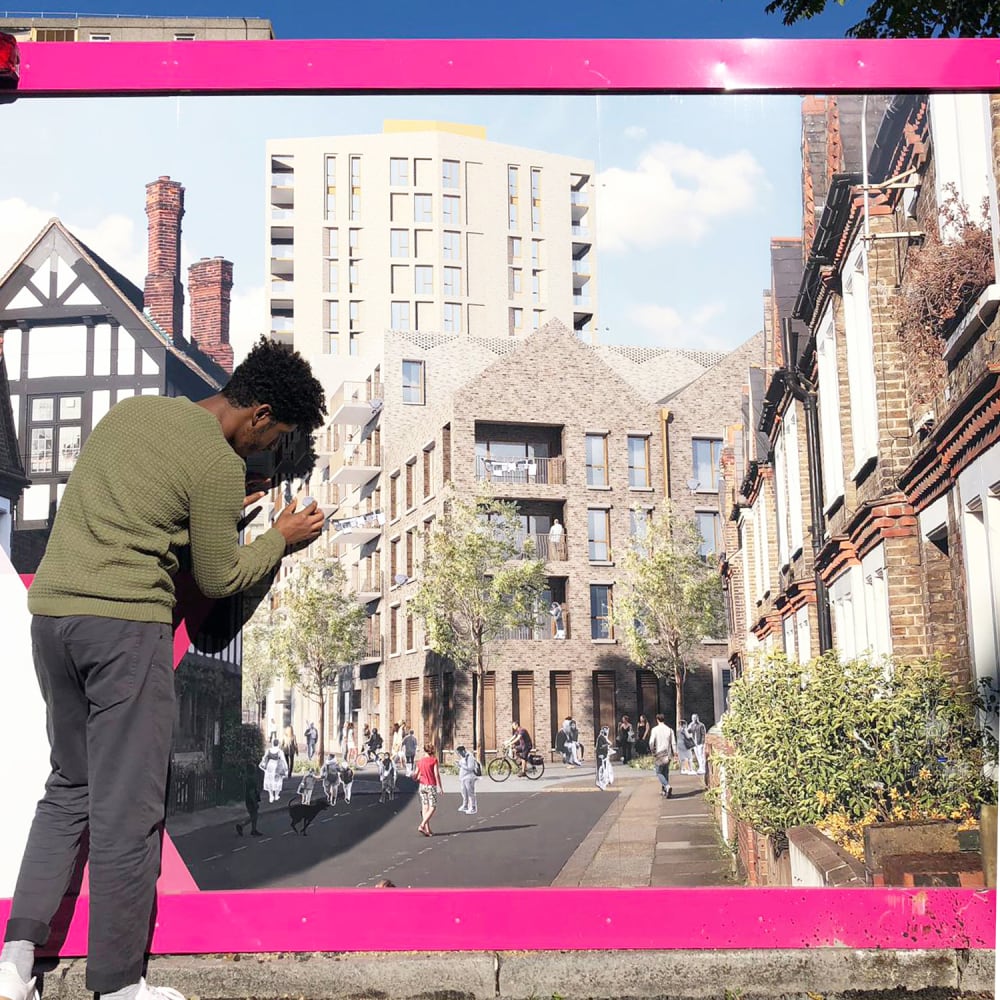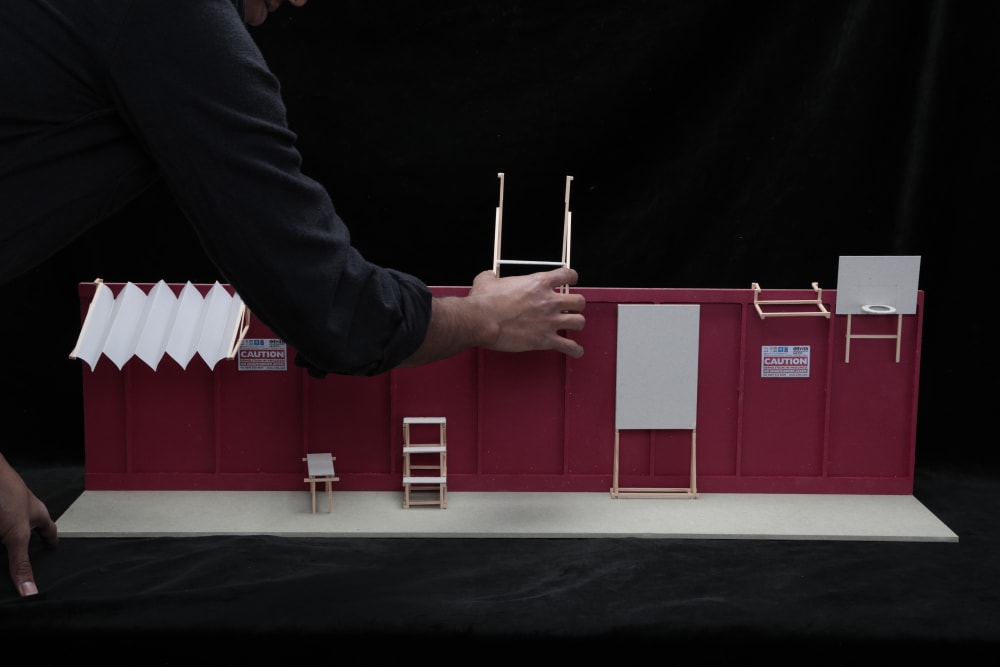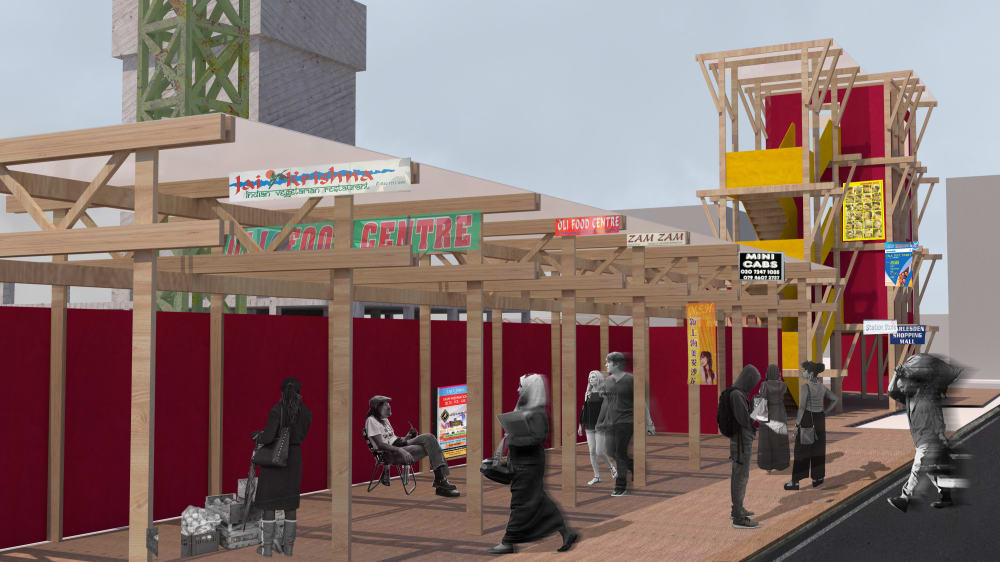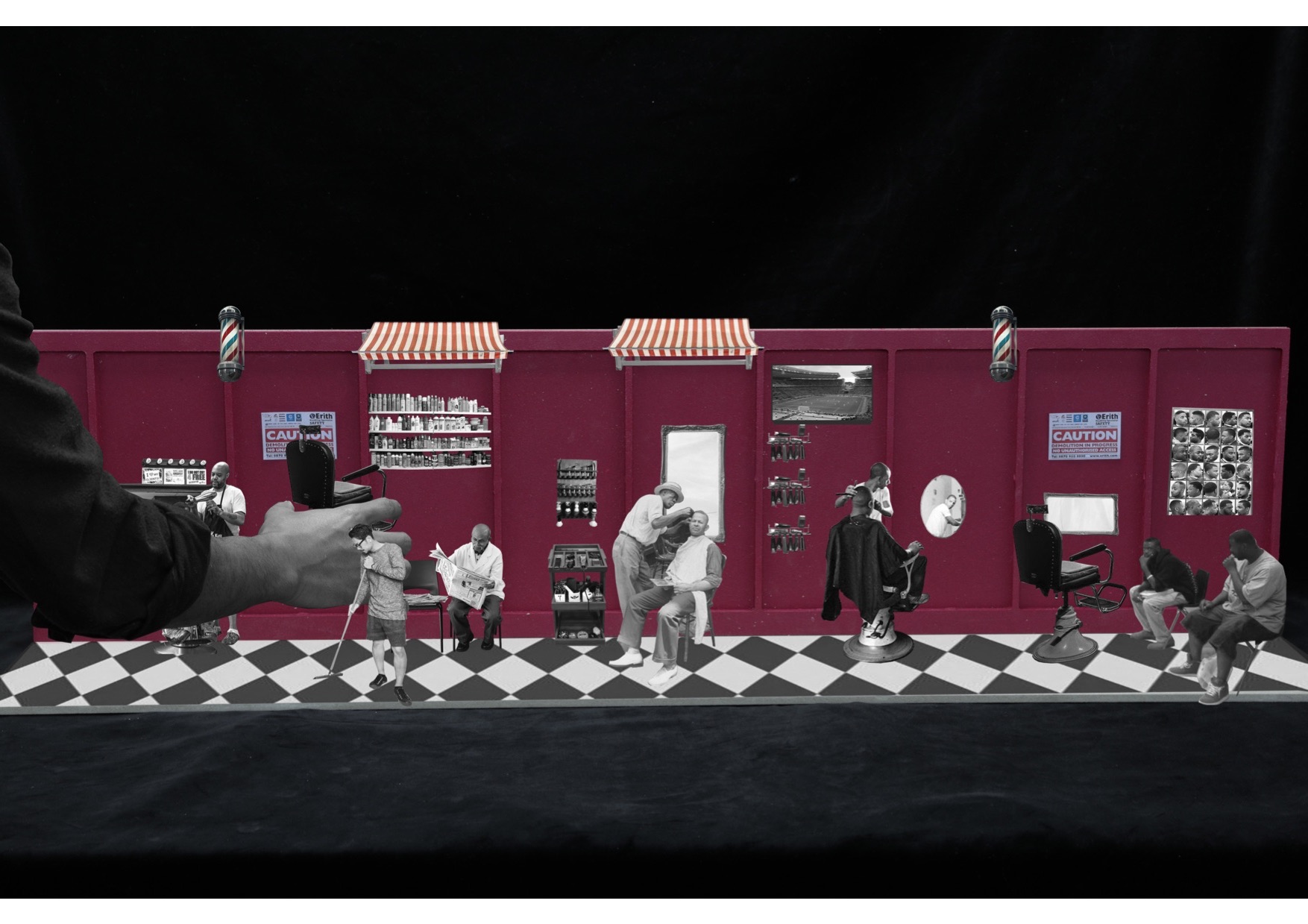Throughout Show Two: Design, we’re celebrating the work of our graduating students and asking them to share the process behind the practice
Graduating from M ARCH Architecture, Moetaz Fathalla transforms the overlooked medium of hoarding from a gentrifying advertisement to commercial spaces that serve the area's current community.

Hoarding
I used to spend time at the Aylesbury estate in south London when I was a teenager visiting friends. It’s currently the site of a large and controversial regeneration project and I started to take notice of the hoarding and what it shows. The demographic portrayed in the renders is that of white middle class but the current community there is very diverse. It's a 2D communication tool to show you the future, the white washing of an area.
Speaking to my friend who lives on the estate he never questioned it. I asked him to look and see if he noticed anything, he quickly realised that he couldn’t see himself in the imagery. It’s a conflicting idea. You might see regeneration as an inevitable future but we don’t realise how much that’s going to change the area, it might be our neighbours or it might be us that face the full effects.
I began hacking and subverting the imagery, adding new figures to reflect the current community and posing the question who are these unknown figures arriving. Who are the ghosts – the people that are yet to be pushed out or the people we don't know who are coming?
The wall
Hoarding is very subtle. In cities, especially London, you walk past it all the time. We can see London’s skyscraper scene as a way of showcasing the city’s capitalistic economy but we don’t recognise that on the street level. We walk past this symbol of socio-econmic change every day. The hoarding is a colonial approach to planning; you claim land, erect a wall, keep people out and show a future that isn’t for them.
Estudio Teddy Cruz + Fonna Forman
I did a placement with Estudio Teddy Cruz + Fonna Forman in San Diego, it’s a collaboration between an architect and a political theorist. They have been focused on the wall between San Diego in the US and Tijuana in Mexico. I was there in the summer of 2018 and tensions across that divide were reaching a boiling point. The studio’s work looks at the politics of architecture, exploring borders, inequality and space. How people adapt through ad hoc interventions. How do I start to feed back within my own project some of the tools I learnt and some of the ways in which the practice engages in what are highly political contexts?

Reclaiming the Hoarding
My project moved from 2D to 3D, to look at the economic activities that can be put forward for the hoarding and the emergence of new users. It's almost this second high street in which the temporary wall allows a framework into what is a highly competitive space (high street), instead of being a static wall, it can it be a occupied. A way to activate this dead space. Working with the footprint of current hoarding I created a programme of interventions, from commercial enterprise to storey-ed viewing platforms.
Look at the watchtower for example, it is associated with walls as this defensive piece of architecture. How do you begin to appropriate and reprogramme to something more inclusive? The large scale regenerations are happening all over London, the project reimagines what happens when we start to engage with the lifespan of these spaces. Playing with the idea of temporary and permanence. how would the masterplan start to look if they incorporated this? A socio-economic infrastructure.

Walter Segal
I was keen to create something that could be easily put together and dismantled. Off the shelf sizes of timber and simply joints. A Walter Segal style of architecture. I don’t want to beautify the wall. You've got to avoid doing the things that you’ve been challenging. This project can easily contradict itself. That’s why at the beginning there are lots of questions that I was asking the hoarding but also myself. Am I going to gentrify the hoarding? That visual language, the familiarity of the High Street is crucial and how do I begin to learn from that?
Crossing disciplines
I like Teddy Cruz’s phrase “the adoption of the procedures of others”. Architecture is a slow process but some of the issues are quite immediate. There needs to be a point when we can react. Other disciplines are quicker to create so I’m interested in how we can adopt some of that. How can we be more nimble in the small scale?
Architecture is a slow process and there are enough architects working for the 1%. How can more of us engage with the 99%? We are trained with toolsets so how can we use those to engage with the issues facing cities today?
Moetaz Fathalla has been nominated for the MullenLowe NOVA Awards. "Reclaiming the Hoarding" is showing at Central Saint Martins during Show Two: Design, 19-23 June.



